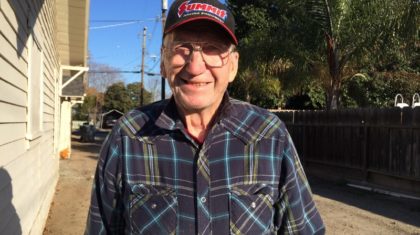#WalkBikeForward: Join us on our journey honoring key moments and people that have shaped our field as we celebrate 20 years of creating active, healthy communities.

Gil Penalosa, founder and board chair of 8 80 Cities, travels all over the world speaking and consulting about creating communities that serve people of all ages. He is also the Chair of World Urban Parks and was formerly Parks Director in Bogota, Colombia.
Big Progress, but Even Bigger Challenges
The conversation about active communities is much broader now. It’s not just cyclists. Public health officials are involved now. Business people. Elected officials. All kinds of citizens. This is huge progress because 20 years ago there was almost no awareness. It’s very positive.
Minneapolis has built this fantastic trail system. In New York, there have been major transformations in terms of walking and biking. Portland has been doing good work for years, in part because of what Alta has done. Many cities now have good bike plans and pedestrian plans. If we carry these out, we will really have active communities.
But we have to lot to do. Right now, there are no big cities with much more than five percent mode share for bikes. Obesity is still increasing. In 1996 there were no states where more than 20 percent of people were obese. Now every single state is above 20 percent, and many are above 30 percent. It’s time for action.
One of the most hopeful signs I see it that the Millennial generation do not see cars as a status symbol. That’s an important start. However, a lot of people assure us that driverless cars will solve all of our problems. We will have less cars parked on the streets, but we will have more cars moving if we don’t change our behavior about using cars everywhere we go and if we continue to sprawl as cities grow. That’s a chief mission for the active communities movement.
Three Steps to a Great Community
Here’s what we need to work toward in the next 20 years.
Parks and Shopping Within Walking Distance of Everyone — An important goal is that every child lives within safe walking distance of a park. This will make it easy and fun for people of all ages to get physical activity. Everything that people need — public transit, parks, shopping, recreation, schools, services — should be within a 10-minute walk. That will become the measure of an active city, a great city.
Citywide networks of protected bike lanes — We need to connect all the destinations in a city for active transportation by adding protected bike lanes and wide sidewalks to all the arterial streets. Public transit is important too. I call this the “minimum grid,” because like the electrical grid it needs to cover everywhere. It is urgent to connect origins with destinations. You will be able to ride on low-traffic roads for no more than a mile to get to the bike network. This is the way to get the share of bike riders above the 1–2 percent it is in most cities.
Lower speed limits on residential streets — Motorists on side streets will travel at the safe speed of 20 miles per hour. When a person is hit by a car going 20 mph, they die only about five percent of the time. At 40 mph, they die 85 percent of the time. Also more people go out and walk to places when the cars are moving at a slower speed. They spend more time socializing with neighbors, making friends, talking to local merchants etc.


